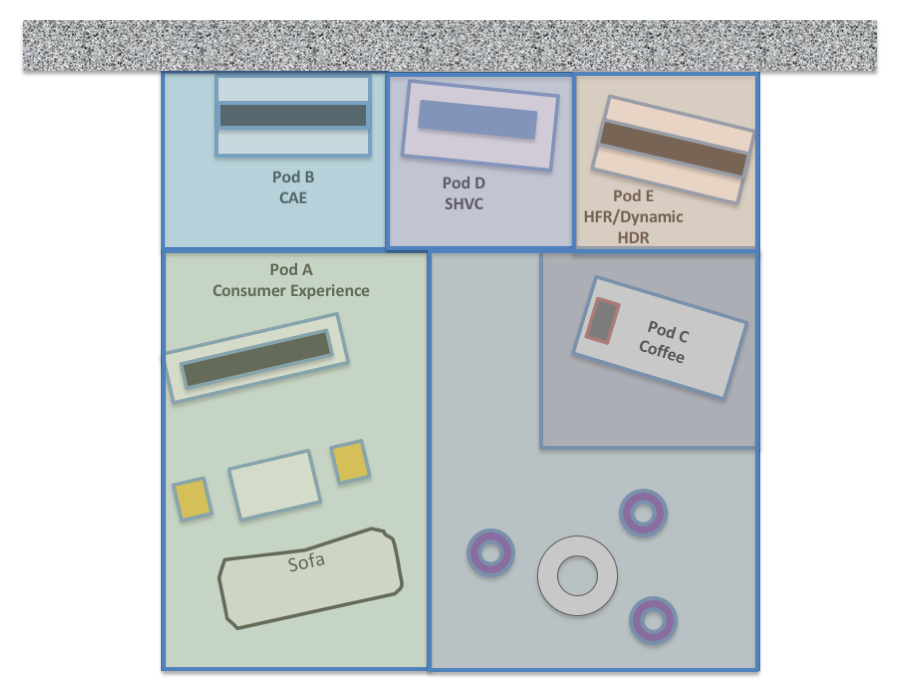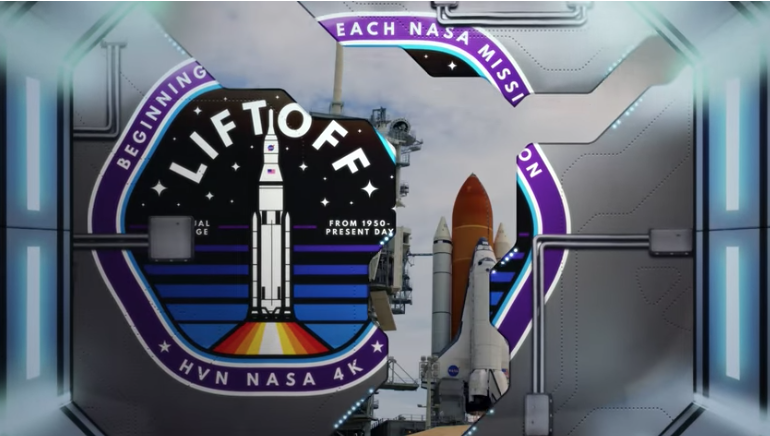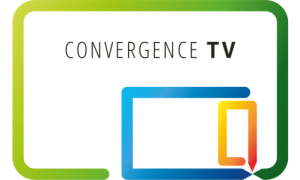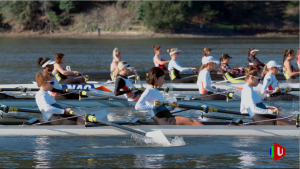This year, the Ultra HD Forum present “2018: The Year of Live HDR TV” at IBC alongside demonstrations in the Future Zone. These key technology demonstrations cover today’s services and the broader evolution of Ultra HD including Dynamic Metadata, High Dynamic Range (HDR), High Frame Rate (HFR), Content Aware Encoding (CAE) and Scalable HEVC (SHVC). We present these demos in separate themed Pods at Stand 8.F22.

Pod A: The Consumer Experience
2018 has been a breakthrough year for High Dynamic Range, with the continuing launch on platforms throughout the year, and the production of large-scale events such as the World Cup Championship and the Olympics. Consumers are now beginning to get access to Live HDR services as well as the On-Demand services that have been available for over a year, and this demonstration pod provides a view into that full-service offering.
Demo 1 – KPN HLG HDR Live IPTV Service
Supporting members: KPN, Sony
KPN have undertaken a range of technical trials since they demonstrated UHD HDR over their live network at IBC2017. In May 2018 KPN extended their service to include the delivery of Linear and Live Services in UHD HDR using HLG, prior to the start of the Football World Cup Championship.
At IBC this year, KPN demonstrates the full consumer experience with World Cup Content.

Demo 2 – NASA TV UHD HDR10 Live OTT Service
Supporting members: Harmonic, KPN, Sony
NASA, with the support of Harmonic, has launched a live HDR-enabled NASA TV UHD service, delivered OTT using HDR10 (PQ10+ST.2086). The service is brought to IBC over KPN’s consumer high-speed broadband.

The combination of both demos represents the full HDR consumer experience to you in all its HDR glory and shows that from a consumer perspective, the flavour of HDR does not matter as both HLG and PQ formats are widely supported in today’s TV displays and devices.
Pod B: Content Aware Encoding
In our surveys of operators who have developed UHD services, one of the key challenges is the issue of bandwidth usage. Content companies and encoder manufacturers however have been developing new approaches to encoding through CAE which is an acronym still having a few variant meanings: Content/Context Aware/Adaptive Encoding. This approach use multiple techniques to optimise encoding of content based on the nature of the content itself, per asset, per scene or even per frame, rather than a fixed encoding ladder. This provides significant improvement in bandwidth usage whilst ensuring quality is maintained.
Demo 3 – On Demand and Live CAE
Supporting Members: Beamr, Brightcove, Harmonic, Sony
The first demo offers the results of offline CAE encoding by members Beamr, Brightcove, and Harmonic, offering side by side display of the CBR and CAE content with the key bit rate savings of CAE being clearly displayed.
Pod D: Using Scalable HEVC (SHVC)
Demo 4 – The Convergence TV Project SHVC
Supporting Members: ATEME with Convergence TV Project
 The HEVC standards enabled in today’s devices offer the ability to provide a single service as Scalable HEVC (SHVC). Therefore, delivering services to HD and 4K consumers need not be a simulcast situation. SHVC is an extension of HEVC that can provide a baseline HD service with an enhancement layer to 4K so that single service content can be consumed by all devices regardless of capability. Our demonstration provided by the Convergence TV group, which includes Ultra HD Forum member ATEME, shows the consumption of both the HD baseline service and the 4K enhanced service as two separate channels. Both of the layers are provided for the demo via broadcast, but the technology enables delivery using multiple pathways including combinations of IP and broadcast.
The HEVC standards enabled in today’s devices offer the ability to provide a single service as Scalable HEVC (SHVC). Therefore, delivering services to HD and 4K consumers need not be a simulcast situation. SHVC is an extension of HEVC that can provide a baseline HD service with an enhancement layer to 4K so that single service content can be consumed by all devices regardless of capability. Our demonstration provided by the Convergence TV group, which includes Ultra HD Forum member ATEME, shows the consumption of both the HD baseline service and the 4K enhanced service as two separate channels. Both of the layers are provided for the demo via broadcast, but the technology enables delivery using multiple pathways including combinations of IP and broadcast.
Pod E: High Frame Rate Interoperability & Dynamic HDR
Phase B technologies are continuing to be developed and Pod D is the place to learn about the latest developments. This is split into two demonstrations, first covering HFR Interoperability and secondly covering Dynamic HDR as an evolution of Phase A HDR technologies.
Demo 5 – HFR Interoperability
Supporting Members: ATEME, LGE, Sony
 Here we demonstrate the enhanced user experience that HFR brings and we provide and demonstrate the results of our Interoperability work of the backwards compatibility approach that is promoted in current standards. Backwards compatibility is an important part of delivering services to the public, particularly when there is a large number of existing devices in the market that do not support new features such as HFR. The developments of HFR have put forward approaches to backwards compatibility, and our work has focused on just how effective those mechanisms are. We will share our initial results from our own Interop Testing.
Here we demonstrate the enhanced user experience that HFR brings and we provide and demonstrate the results of our Interoperability work of the backwards compatibility approach that is promoted in current standards. Backwards compatibility is an important part of delivering services to the public, particularly when there is a large number of existing devices in the market that do not support new features such as HFR. The developments of HFR have put forward approaches to backwards compatibility, and our work has focused on just how effective those mechanisms are. We will share our initial results from our own Interop Testing.
Demo 6 – Dynamic HDR
Supporting Members: ATEME, LGE, Technicolor
The second demonstration in this pod shows the range of Phase A content formats (SDR, HLG10 and PQ10/HDR10) and adds Phase B Dynamic HDR formats (SL-HDR2) to show how Dynamic HDR Metadata enhances the content experience for Phase B capable displays without breaking the experience with Phase A displays and devices. This extends on our earlier NAB18 demonstration with Dolby Vision.
Pod C: The Coffee Pod
… and you thought we missed one out. Obviously not a demo but something refreshing to have whilst going around the demonstrations.
The Demos and the Interop Working Group
These demos have been brought together by participating member companies of the Ultra HD Forum Interop Working Group. The Working Group is tasked with facilitating interoperability work and plug-fests to test usability and comprehensiveness of Ultra HD and related media standards including the Forum’s Guidelines. We also promote the use of UHD and related services that meet the scope of the Forum, these demos stand in that context and derive directly from our Interoperability efforts of the last 12 months.
